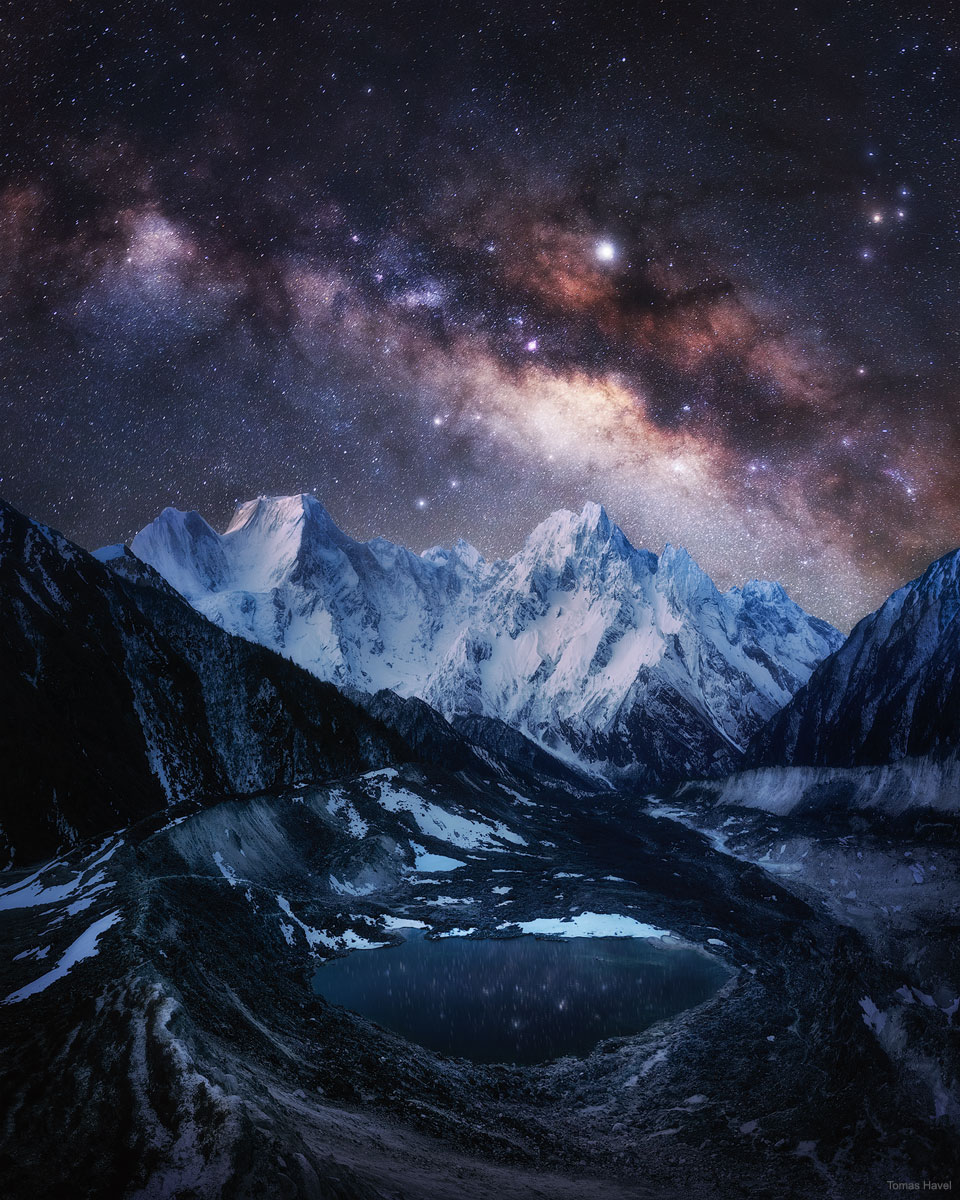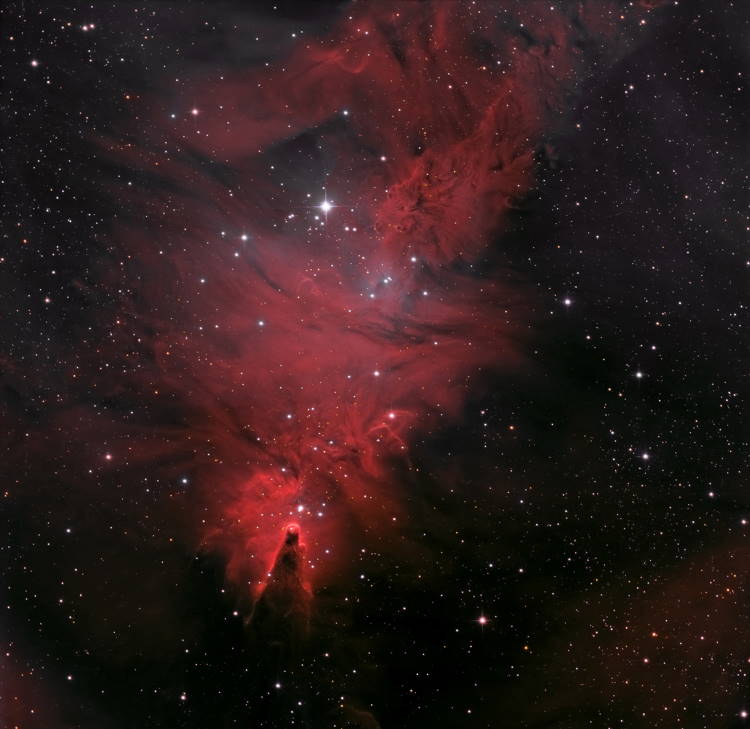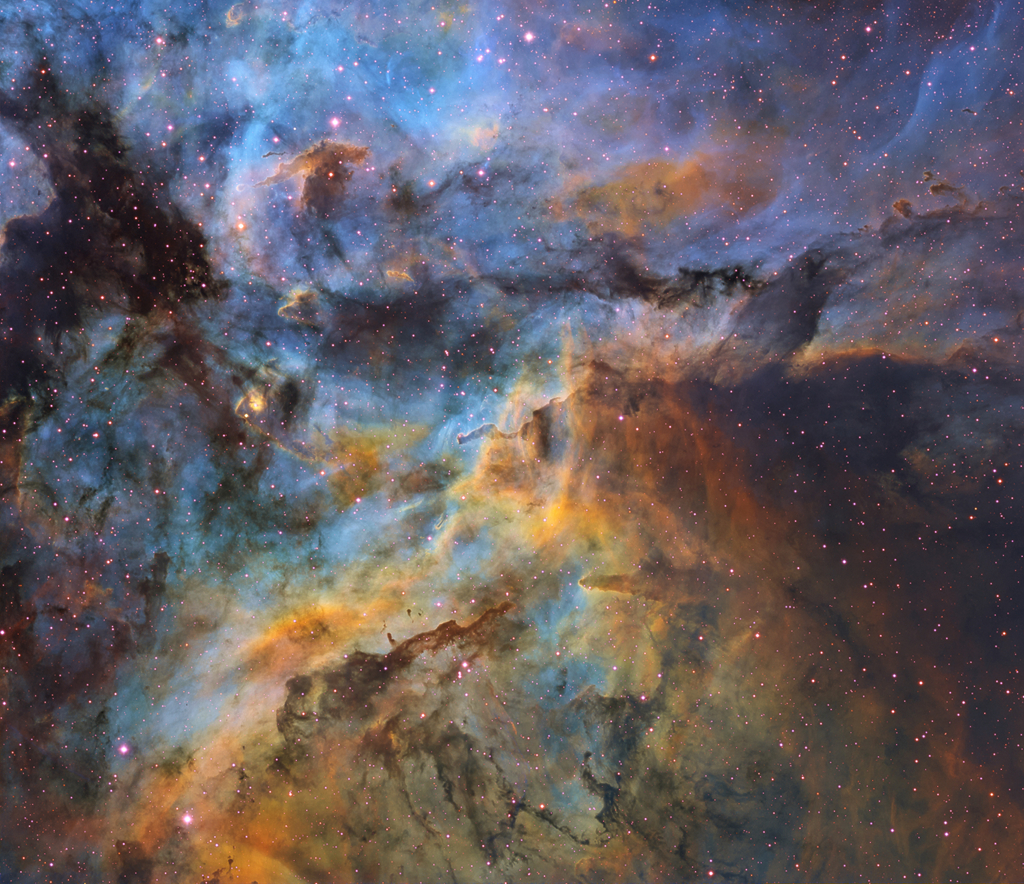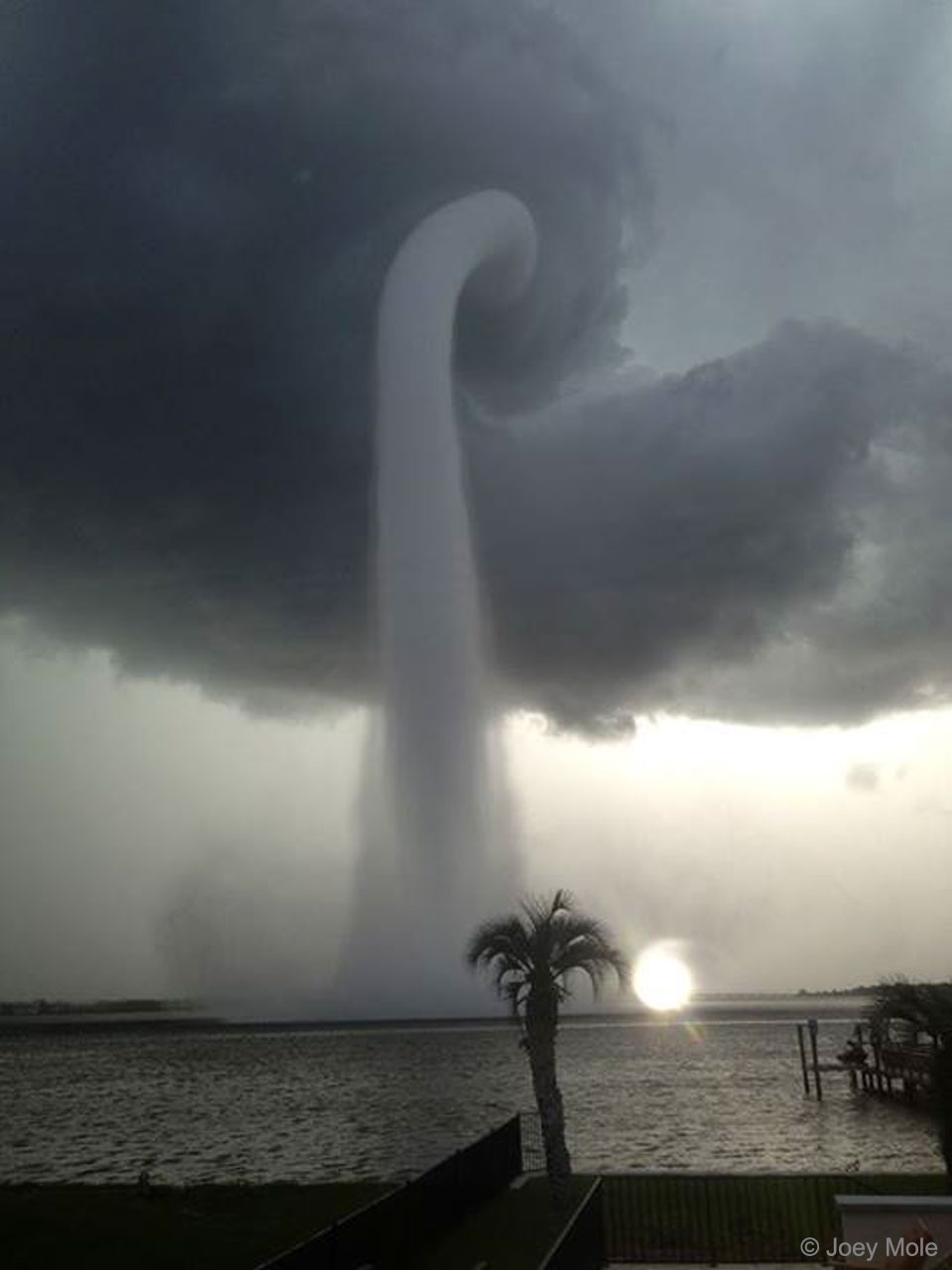
Explanation:
What’s higher than the Himalayas?
Although the
Himalayan Mountains
are the tallest on planet Earth, they don't measure up to the
Milky Way.
Visible above the snow-capped mountains in the featured image is the
arcing central band of our home galaxy.
The bright spot just above the central plane is the
planet Jupiter,
while the brightest orange spot on the upper right is the
star Antares.
The astrophotographer
braved below-zero temperatures at nearly 4,000-meters
altitude to take the photographs that compose this image.
The featured picture is a composite of eight exposures
taken with same camera and from the same location over three hours,
just after sunset, in 2019 April, from
near Bimtang Lake in
Nepal.
Over much of
planet Earth, the planets
Mercury (faint) and
Venus (bright) will be
visible this week after sunset.






